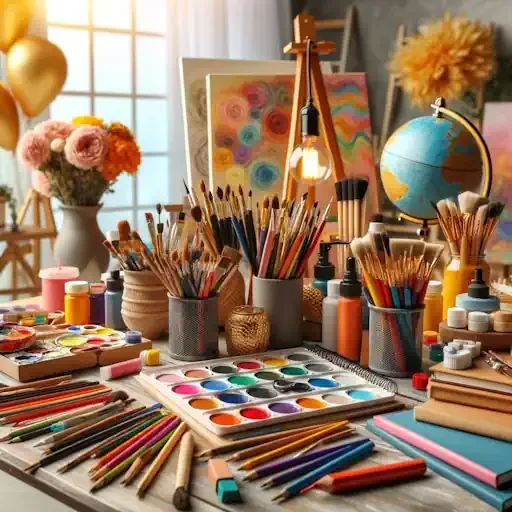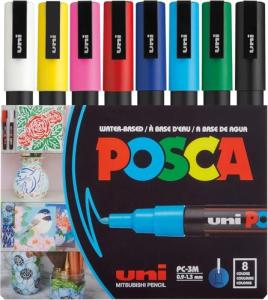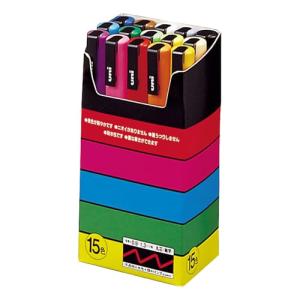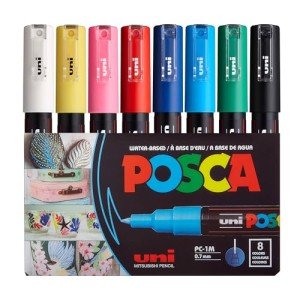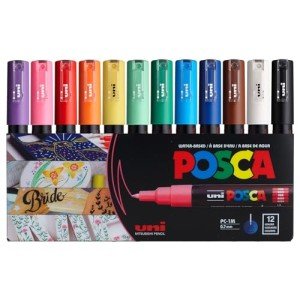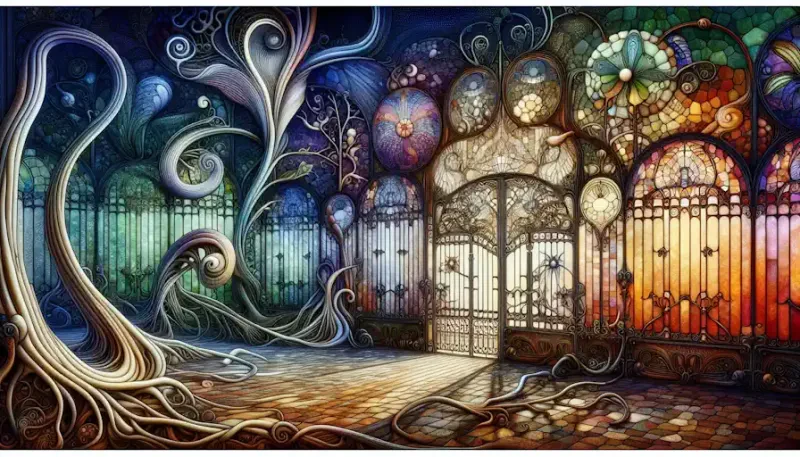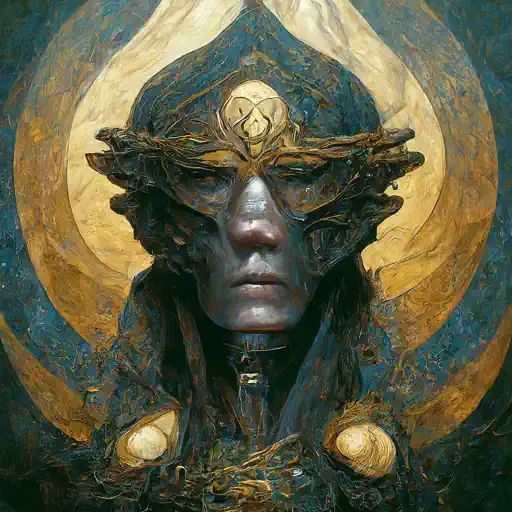Introduction: The Importance Of A Well-Stocked Artist's Palette
A well-stocked artist's palette is more than just a collection of paints, pencils, and brushes. It's a gateway to endless creative possibilities, a reflection of an artist's unique style, and a critical factor in the success of any artistic endeavor. Whether you're a seasoned professional or just starting your creative journey, understanding the importance of a well-curated collection of art supplies is essential.
Why Your Art Supplies Matter
The quality and variety of your art supplies directly impact the quality of your artwork. High-quality pigments produce vibrant, long-lasting colors, while well-crafted brushes offer precision and control. The right tools can inspire new techniques, unlock hidden talents, and elevate your artistic expression to new heights. Conversely, inadequate or inferior supplies can hinder your progress, frustrate your efforts, and limit your creative potential. Investing in good art supplies is an investment in your artistic growth.
The Artist's Palette: More Than Just A Mixing Surface
The term "artist's palette" often refers to the physical surface used for mixing colors. However, in a broader sense, it encompasses the entire range of tools and materials an artist uses to create their work. This includes paints, pencils, brushes, canvases, paper, sculpting tools, and a myriad of other supplies. Your artist's palette is a personalized toolbox, carefully curated to meet your specific needs and preferences.
Essential Vs. Nice-To-Have Supplies
While the allure of shiny new art supplies is undeniable, not every item is essential. As a beginner, it's wise to start with a core set of essential tools and gradually expand your collection as your skills and interests develop. Focus on versatile supplies that can be used across different mediums and techniques. As you gain experience, you can then invest in specialty items tailored to your specific artistic focus.
Matching Your Palette To Your Medium
Different artistic mediums require different tools and materials. A watercolor painter's palette will look vastly different from that of a sculptor or digital artist. Before you start stocking up on supplies, it's crucial to identify your preferred mediums and research the specific tools and materials they require. This will ensure you have the right tools for the job and avoid unnecessary expenses on supplies you may not use.
Essential Drawing Supplies: The Foundation Of Every Artist
Drawing is the backbone of many artistic disciplines, serving as a fundamental skill for painters, sculptors, and even digital artists. Whether you're sketching out ideas, practicing your linework, or creating finished pieces, having the right drawing supplies is crucial for achieving your artistic vision.
Pencils: Graphite, Charcoal, And Colored
Graphite Pencils: The workhorses of the drawing world, graphite pencils come in a range of hardnesses (from 9H to 9B). Harder pencils (H) create lighter, finer lines, while softer pencils (B) produce darker, thicker marks. A set of graphite pencils with varying degrees of hardness will give you the flexibility to create a wide range of tonal values.
Charcoal Pencils: Charcoal pencils offer a deeper, richer black than graphite and are ideal for creating dramatic contrasts and expressive lines. They come in varying degrees of softness, similar to graphite pencils.
Colored Pencils: These versatile tools come in an array of hues and are perfect for adding color to sketches, creating detailed illustrations, or experimenting with different shading techniques.
Erasers: Types And When To Use Them
Kneaded Erasers: These pliable erasers can be molded into any shape, making them ideal for lifting highlights, softening edges, and creating subtle transitions.
Vinyl Erasers: These firm erasers are excellent for erasing large areas of graphite or charcoal and removing stubborn marks.
Gum Erasers: Softer than vinyl erasers, gum erasers are gentle on paper and suitable for removing light pencil marks.
Pencil Erasers: These small erasers are often found at the end of pencils and are handy for correcting small mistakes or erasing in tight spaces.
Sketchbooks And Drawing Paper: A Variety Of Choices
Sketchbooks: These portable books are perfect for on-the-go sketching, capturing ideas, and practicing your drawing skills. They come in various sizes and paper weights to suit different preferences.
Drawing Paper: Available in pads or individual sheets, drawing paper offers a more substantial surface for finished artwork. It comes in a variety of textures, weights, and finishes, each suited to different drawing mediums and techniques.
Blending Tools: Stumps, Tortillons, And More
Blending Stumps: Made of tightly rolled paper, blending stumps are used to smudge and blend graphite, charcoal, or pastel marks, creating smooth gradients and soft transitions.
Tortillons: Similar to blending stumps, tortillons are made of tightly rolled paper with a pointed tip, allowing for precise blending in small areas.
Chamois Cloth: A soft leather cloth used for blending larger areas of charcoal or pastel and creating subtle textures.
Blending Brushes: Soft-bristled brushes can be used to blend colored pencil marks and create smooth color transitions.
Rulers And Other Measuring Tools
Rulers: Essential for creating straight lines, measuring distances, and ensuring accurate proportions in your drawings.
T-Squares: Used in conjunction with a drawing board, T-squares help you draw perfectly straight horizontal lines and maintain accurate angles.
Triangles: These tools help you draw precise angles, perpendicular lines, and other geometric shapes.
French Curves: These flexible rulers are useful for drawing smooth curves and arcs.
Painting Supplies: A World Of Color And Texture
Painting offers a vibrant and expressive way to bring your artistic vision to life. Whether you're drawn to the bold strokes of acrylics, the luminous depth of oils, or the delicate washes of watercolors, having the right painting supplies is essential for achieving the desired effects and expressing your creativity.
Acrylic Paints: Versatile And Beginner-Friendly
Versatility: Acrylic paints can be used on a variety of surfaces, including canvas, wood, paper, and even metal.
Fast-drying: Unlike oils, acrylics dry quickly, allowing for faster layering and completion of artwork.
Water-soluble: Acrylics can be thinned with water, offering a range of consistencies from thick impasto to thin washes.
Wide range of colors: Acrylics are available in an extensive palette of colors, including metallics, fluorescents, and iridescent shades.
Beginner-friendly: Due to their ease of use and versatility, acrylic paints are an excellent choice for beginners.
Oil Paints: Rich, Luminous, And Slow-Drying
Rich colors and textures: Oil paints offer a depth and luminosity that is unmatched by other mediums.
Slow-drying: This characteristic allows for blending, glazing, and other techniques that are not possible with fast-drying paints.
Versatility: Oil paints can be used on a variety of surfaces, including canvas, wood, and metal.
Wide range of colors: Like acrylics, oil paints come in a vast array of colors and finishes.
Professional-grade: Oil paints are often favored by professional artists for their rich colors, versatility, and archival qualities.
Watercolor Paints: Transparent And Expressive
Transparency: The unique transparency of watercolors allows for layering, creating luminous effects, and capturing the essence of light.
Expressive: Watercolors offer a fluid and spontaneous way to express emotions and capture fleeting moments.
Portable: Watercolor sets are compact and easy to transport, making them ideal for plein air painting (painting outdoors).
Wide range of colors: Watercolors are available in a wide variety of pigments, from subtle earth tones to vibrant jewel-like shades.
Techniques: Watercolors can be used for a variety of techniques, including washes, wet-on-wet, glazing, and dry brushing.
Brushes: Shapes, Sizes, And Bristle Types
Round brushes: Versatile brushes used for detail work, outlines, and filling in small areas.
Flat brushes: Ideal for broad strokes, washes, and covering large areas.
Filbert brushes: A combination of round and flat, filbert brushes offer versatility for both detail work and broader strokes.
Bright brushes: Short-haired flat brushes used for thick, bold strokes and impasto techniques.
Fan brushes: Used for blending, feathering, and creating textured effects.
Bristle types: Brushes can be made with natural hair (such as hog or sable) or synthetic fibers. Natural hair brushes are generally softer and more absorbent, while synthetic brushes are more durable and resilient.
Palettes: Traditional Vs. Stay-Wet Palettes
Traditional palettes: These flat surfaces, often made of wood, plastic, or ceramic, are used for mixing and holding paints.
Stay-wet palettes: These palettes feature a special moisture-retaining surface that keeps paints from drying out, extending their working time. They are particularly useful for watercolor and acrylic painters.
Sculpting And 3D Art Supplies: Shaping Your Ideas
Sculpting and 3D art offer a tangible and tactile way to express creativity, allowing artists to transform their ideas into physical forms. Whether you're shaping clay, carving wood, or building with mixed media, having the right tools and materials is essential for bringing your three-dimensional visions to life.
Clay And Modeling Materials: Air-Dry Vs. Oven-Bake
Air-Dry Clay: This versatile clay hardens naturally when exposed to air, making it convenient for beginners and those without access to a kiln. Air-dry clay comes in various types, such as paper clay, earthen clay, and polymer clay, each with its unique properties and applications.
Oven-Bake Clay: This type of clay requires baking in an oven to harden. Polymer clays like Sculpey and Fimo are popular choices due to their wide range of colors, flexibility, and durability. Oven-bake clays are ideal for creating intricate details and durable sculptures.
Other Modeling Materials: Sculpting wax, epoxy putty, and even paper mache can be used for creating three-dimensional forms, offering a variety of textures and working properties.
Sculpting Tools: Loop Tools, Ribbon Tools, And More
Loop Tools: These tools feature a looped wire at each end and are used for carving, smoothing, and shaping clay. Different loop shapes and sizes offer versatility for various techniques.
Ribbon Tools: Similar to loop tools, ribbon tools have a flat, ribbon-like blade that can be used for cutting, slicing, and creating textured effects.
Pottery Tools: Tools like ribs, scrapers, and fettling knives are used for smoothing, shaping, and refining clay surfaces.
Wood Carving Tools: Chisels, gouges, and knives are essential for carving wood sculptures, while rasps and files are used for smoothing and shaping.
Armatures And Supports: Building A Strong Foundation
Wire Armatures: These internal structures provide support and stability for clay or other modeling materials, preventing sagging and ensuring the sculpture holds its shape as it dries or bakes.
Wooden Supports: Wooden dowels or blocks can be used as armatures for larger sculptures or as bases for attaching smaller pieces.
Cardboard And Foam: These lightweight materials can be used to create temporary or permanent supports for sculptures, especially when working with lighter-weight modeling materials.
Finishing Supplies: Sandpaper, Sealants, And Paints
Sandpaper: Used to smooth rough edges, refine surfaces, and prepare sculptures for painting or finishing.
Sealants: Clear sealants like acrylic varnish or polyurethane can protect sculptures from moisture, dust, and other environmental factors.
Paints: Acrylic paints, oil paints, or specialty sculpting paints can be used to add color and detail to finished sculptures.
Patinas: Chemical patinas can be applied to metal sculptures to create unique colors and finishes.
Mixed Media Supplies: Unleash Your Creativity
Mixed media art embraces the freedom to combine different materials and techniques, creating unique and multi-layered works of art. It's a playground for experimentation and innovation, where the only limit is your imagination. Whether you're layering papers, incorporating found objects, or blending different mediums, the right mixed media supplies can open up a world of creative possibilities.
Collage Materials: Paper, Fabric, And Found Objects
Paper: Scrapbook paper, tissue paper, vintage maps, newspapers, and even old book pages can be used to create collages with depth and texture.
Fabric: Fabric scraps, ribbons, lace, and other textiles can add a tactile dimension to mixed media artwork.
Found Objects: Anything from bottle caps and buttons to seashells and feathers can be incorporated into mixed media pieces, adding a personal touch and unique character.
Markers And Pens: Alcohol-Based, Water-Based, And More
Alcohol-Based Markers: These vibrant markers offer a wide range of colors and blend seamlessly, making them ideal for illustrations, coloring, and mixed media projects.
Water-Based Markers: These markers are water-soluble and can be used for calligraphy, hand lettering, and creating washes or gradients.
Pigment Pens: These archival pens offer a rich, opaque black ink that is waterproof and fade-resistant, making them perfect for outlining, sketching, and adding details to mixed media artwork.
Gel Pens: These pens come in a variety of colors and finishes, including metallic, glitter, and neon, adding a touch of sparkle and dimension to mixed media pieces.
Inks And Dyes: Adding Vibrant Color
Acrylic Inks: These versatile inks can be used for painting, drawing, stamping, and adding washes of vibrant color to mixed media projects.
Alcohol Inks: These highly pigmented inks create stunning, fluid effects and can be used on a variety of surfaces, including Yupo paper, metal, and glass.
Watercolor Inks: Similar to watercolors, these inks offer transparency and can be used for washes, layering, and other watercolor techniques.
Dye Inks: These water-based inks are often used for stamping and creating colorful backgrounds or washes on paper and fabric.
Adhesives And Glues: Choosing The Right Bond
PVA Glue: This all-purpose adhesive is ideal for bonding paper and other porous materials.
Matte Medium: This acrylic medium can be used as both a glue and a sealant, adding a protective layer to mixed media artwork.
Gel Medium: Similar to matte medium, gel medium offers a thicker consistency and can be used to create textured effects.
Spray Adhesive: This quick-drying adhesive is perfect for adhering large pieces of paper or fabric to a surface.
Specialty Glues: Depending on the materials you're working with, you may need specialized glues for bonding metal, plastic, or other non-porous surfaces.
Gesso And Primers: Preparing Your Surface
Gesso: This acrylic primer is used to prepare canvases, wood panels, and other surfaces for painting. It creates a smooth, absorbent surface that helps paint adhere evenly.
Clear Gesso: This transparent primer can be used on colored surfaces to maintain the original color while providing a suitable painting surface.
Colored Gesso: This tinted primer can be used to create a colored base layer for artwork, adding depth and complexity.
Specialty Supplies: Tailoring Your Palette To Your Interests
While the previous sections covered the essential supplies for a well-rounded artist's toolkit, this section looks into specialized materials that cater to specific artistic interests and techniques. Whether you're passionate about calligraphy, printmaking, or digital art, exploring these specialty supplies can open up new avenues for creative expression and deepen your artistic practice.
Calligraphy Supplies: Pens, Inks, And Nibs
Calligraphy Pens: These pens are specifically designed for calligraphy and come in various styles, including dip pens, fountain pens, and brush pens.
Inks: Calligraphy inks are available in a wide range of colors and formulas, including India ink, sumi ink, and gouache.
Nibs: The metal tips of dip pens, nibs come in various shapes and sizes, each producing different line widths and effects.
Practice Paper: Calligraphy requires practice and experimentation, so having dedicated practice paper is essential.
Guides And Templates: These tools can help you learn different calligraphy styles and maintain consistent letterforms.
Printmaking Supplies: Blocks, Ink, And Tools
Printmaking Blocks: These can be made of wood, linoleum, or even foam, and are used to create the relief surface for printing.
Ink: Printmaking inks are typically oil-based or water-based and come in various colors.
Brayers: These rollers are used to apply ink to the printmaking block.
Barren: This flat tool is used to rub the paper against the inked block to transfer the image.
Printing Press: A printing press is not essential for beginners, but it can help achieve consistent results and create larger prints.
Digital Art Supplies: Tablets, Styluses, And Software
Drawing Tablets: These pressure-sensitive tablets allow you to draw directly on a digital canvas using a stylus.
Styluses: These pen-like tools are used to draw and interact with the drawing tablet.
Software: Digital art software programs like Adobe Photoshop, Procreate, and Clip Studio Paint offer a wide range of tools and features for creating digital artwork.
Accessories: Drawing gloves can reduce friction and smudging, while screen protectors can protect your tablet's screen from scratches.
Textile Art Supplies: Fabric, Thread, And Dyes
Fabric: Choose fabrics that are suitable for your desired technique, whether it's embroidery, quilting, or fabric painting.
Thread: Embroidery floss, sewing thread, and yarn are all used for different textile art techniques.
Needles: Embroidery needles, tapestry needles, and sewing needles are essential for working with fabric and thread.
Dyes: Fabric dyes and paints can be used to add color and pattern to fabrics.
Other Tools: Scissors, rotary cutters, and seam rippers are all useful tools for working with fabric.
Building Your Palette: A Step-By-Step Guide
Embarking on your artistic journey is an exciting endeavor, and building a well-rounded artist's palette is a crucial step. This section provides a step-by-step guide to help you curate the perfect collection of art supplies that align with your unique artistic vision.
Assessing Your Needs: Mediums, Style, and Budget
Before diving into the vast world of art supplies, take a moment to assess your individual needs. Consider the following:
Mediums: Determine which mediums you are most drawn to, whether it's drawing, painting, sculpting, mixed media, or a combination. Your choice of mediums will heavily influence the types of supplies you prioritize.
Style: Reflect on your artistic style and preferences. Are you drawn to realism, abstract expressionism, or something in between? Your style will dictate the specific tools and materials that best suit your creative expression.
Budget: Establish a realistic budget for your art supplies. While quality is important, there are options available for every price point. Start with the essentials and gradually expand your collection as your budget allows.
Researching Brands and Products: Finding Quality Supplies
The art supply market is vast, with countless brands and products vying for your attention. To make informed decisions, it's essential to research different brands and their offerings. Read reviews, compare prices, and seek recommendations from fellow artists. Look for brands known for their quality, durability, and value.
Starting with the Essentials: A Basic Toolkit
When starting, focus on acquiring the essential tools for your chosen mediums. This might include:
Drawing: Graphite pencils, charcoal pencils, erasers, sketchbook, blending tools, rulers.
Painting: Acrylic or oil paints, brushes, palette, canvas or painting surface.
Sculpting: Clay or modeling material, sculpting tools, armature wire.
Mixed Media: Collage materials, markers, pens, inks, adhesives.
This basic toolkit will provide a solid foundation for your artistic exploration. As you gain experience and confidence, you can gradually expand your collection.
Expanding Your Collection: Adding Specialty Items
Once you've mastered the basics, start exploring specialty items that cater to your specific interests and techniques. This could include:
Calligraphy: Calligraphy pens, inks, and nibs.
Printmaking: Blocks, ink, and carving tools.
Digital Art: Tablets, styluses, and software.
Textile Art: Fabric, thread, and dyes.
The possibilities are endless, so let your curiosity guide you as you discover new tools and materials to enhance your artistic expression.
Organizing Your Supplies: Keeping Your Workspace Tidy
A well-organized workspace is essential for a productive and enjoyable creative process. Invest in storage solutions like drawers, bins, and shelves to keep your supplies organized and easily accessible. Label everything clearly and develop a system that works for you. A tidy workspace will not only save you time but also inspire creativity and reduce stress.
Maintaining Your Art Supplies: Making Them Last
Your art supplies are an investment in your creativity, and with proper care, they can last for years, even decades. This section explores the essential maintenance practices that ensure your tools and materials remain in optimal condition, ready to bring your artistic visions to life.
Cleaning Brushes and Tools: Proper Care and Storage
Brushes, especially those used with paints, require meticulous cleaning after each use. Different brush types demand specific cleaning methods:
Natural Hair Brushes: Gently clean with appropriate brush soap or cleaner, reshape the bristles, and allow to dry horizontally.
Synthetic Brushes: Wash with warm water and mild soap, ensuring all paint residue is removed.
Other tools like palettes, palette knives, and sculpting tools should also be cleaned thoroughly after each session to prevent buildup and maintain their functionality. Proper storage, such as storing brushes upright in a container, prevents damage and prolongs their lifespan.
Storing Paints and Other Materials: Avoiding Spoilage
Paints, inks, and other materials have varying shelf lives and storage requirements. Generally, store paints in a cool, dry place away from direct sunlight. Tightly seal containers to prevent drying or contamination.
Acrylics: Store upright to prevent separation. If they thicken, add a few drops of water or acrylic medium to restore their consistency.
Oils: Store upside down to maintain a tight seal and prevent air bubbles.
Watercolors: Keep pans and tubes tightly closed to avoid drying out.
Specific materials like clay may require special storage conditions, such as storing in airtight containers or wrapping in damp cloths to prevent drying. Always refer to the manufacturer's instructions for optimal storage practices.
Replacing Worn-Out Supplies: Knowing When to Upgrade
Over time, even with diligent care, some supplies will inevitably wear out. Brushes may lose their bristles, pencils become dull, and paints lose their vibrancy. Recognizing when to replace worn-out supplies is crucial for maintaining the quality of your artwork. Invest in new tools when they no longer perform as expected, ensuring your creative expression remains unhindered by subpar materials.
By following these maintenance practices, you not only extend the lifespan of your art supplies but also cultivate a sense of respect and appreciation for the tools that empower your artistic journey.
Your Artist's Palette, Your Creative Journey
Your artist's palette is more than just a collection of tools and materials; it is a reflection of your artistic identity, a catalyst for your creative expression, and a companion on your artistic journey.
The Joy of Experimentation: Trying New Supplies
Embrace the thrill of exploring new artistic horizons by venturing beyond your comfort zone and experimenting with unfamiliar supplies. Each new tool or material you encounter opens up a world of possibilities, allowing you to discover hidden talents, refine your techniques, and expand your artistic vocabulary. Whether it's a new type of paint, a different brushstroke, or an unconventional medium, each experiment adds depth and richness to your creative repertoire.
Sharing Your Knowledge: Inspiring Other Artists
As you gain experience and expertise, consider sharing your knowledge and insights with fellow artists. Whether through workshops, tutorials, or online platforms, your guidance can spark inspiration, encourage experimentation, and foster a vibrant artistic community. By sharing your passion and expertise, you contribute to the collective growth and evolution of the art world.
Investing in Your Passion: The Value of Quality Tools
While budget constraints are a reality for many artists, investing in quality tools and materials is a worthwhile endeavor. High-quality supplies not only enhance your artistic expression but also demonstrate a commitment to your craft. A well-made brush, a vibrant pigment, or a sturdy easel can elevate your work, boost your confidence, and inspire you to reach new creative heights.
Your artist's palette is a dynamic and ever-evolving entity. It grows and transforms alongside your artistic journey, reflecting your unique style, preferences, and aspirations. By nurturing your creativity, embracing experimentation, sharing your knowledge, and investing in quality tools, you unlock the full potential of your artistic expression and embark on a fulfilling and enriching creative journey.
Summary
Building your artist's palette is a personalized journey that begins with assessing your individual needs based on your preferred mediums, artistic style, and budget. Thorough research into brands and products ensures you invest in quality supplies that will stand the test of time. Starting with essential tools for your chosen mediums provides a strong foundation, while gradually expanding your collection with specialty items caters to your unique interests and techniques. Maintaining an organized workspace enhances creativity and productivity, while proper care and maintenance of your supplies ensure their longevity. Embrace the joy of experimentation and continuous learning as you curate a palette that reflects your artistic vision and fuels your creative journey.
